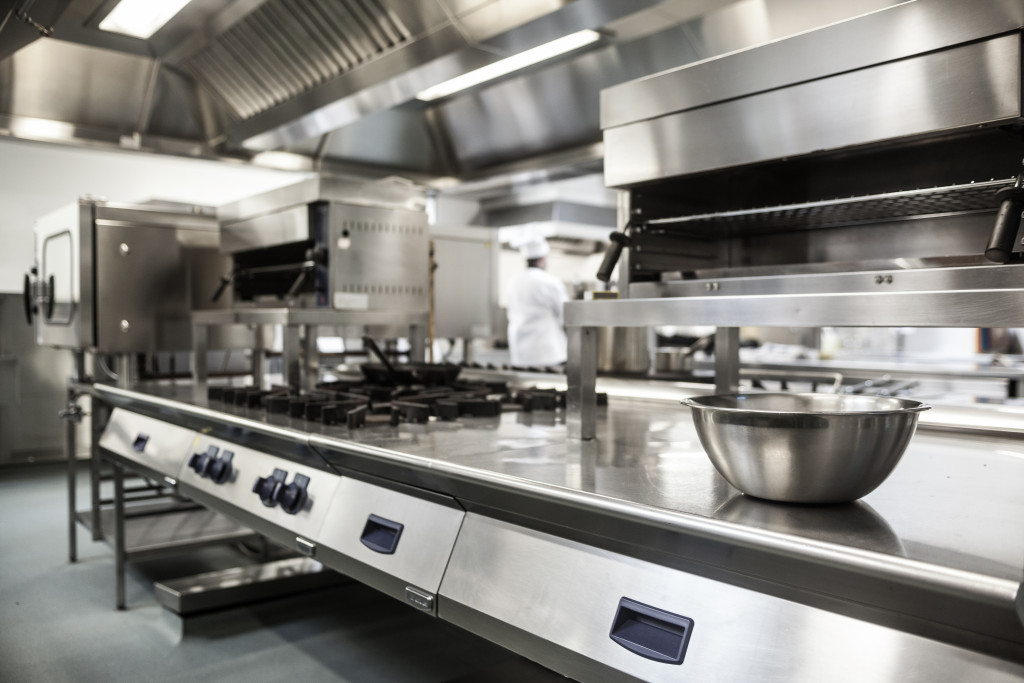The food and beverage industry is vast, varied, and replete with highly specialized technology and equipment. To streamline production, a food or beverage business partners up with a reliable liquid filling machine manufacturer. The food and beverage industry is one of the world’s oldest industries, but it’s also one of the most forward-thinking. Let’s look at how technology is shaping the food and beverage industry.
Technology has had a beneficial effect on every aspect of our society, including education. There is always something to be done, from changing the way we go about our daily lives to particularly improving the way we produce, prepare, and purchase our food. Furthermore, it has, in the end, satisfied our unquenchable need for convenience. The following things we’re going to discuss will outline what businesses are succeeding in the food and beverage industry.
So what are some of how technology is boosting the food and beverage sector in particular? What are successful businesses investing in to stay at the top? Here are a few of our favorite illustrations:
1. Becoming Conscious of Your Energy Usage
The increase in government regulations governing cleanliness and hygiene and the enforcement of Environmental Protection Agency (EPA) standards prompt foodservice equipment manufacturers to develop more energy-efficient products to ensure kitchen operators remain in compliance, according to a report by Grand View Research.
In addition to the growing popularity of the zero-waste kitchen, there is an increasing need for more energy-efficient goods, boosting the demand for energy-star certified products. Operators can, better than ever before, create a culinary operation that is more ecologically aware. Turbo Air, Blodgett, Southbend, and Pitco are just a few companies that manufacture highly efficient, Energy Star certified kitchen equipment.
2. The Peak of the Environmentally-conscious Movement

Sustainability was a significant trend in 2019, and it is expected to gain more traction in 2020 as part of a broader trend toward greater transparency in the business. Unsustainable aquatic farming methods are becoming more well-known, as is the concept of zero waste. The demand for sustainable seafood (i.e., lesser-recognized fish) has increased in recent years, with chefs seeking unusual options. Investigating your seafood sourcing methods and considering new partners that can bring better and more environmentally friendly alternatives to the table could be beneficial to your restaurant company.
Vector illustration of an electric cooktop number three. Electric equipment is becoming more popular. Restaurant and hotel foodservice operators are increasingly choosing to buy new equipment rather than repair old equipment, as the demand for smart appliances that are simple to use and more environmentally friendly grows. The companies Manitowoc, Blodgett, Carter-Hoffmann, and Crown are just a few examples of the industry’s leaders working to create products compatible with current energy requirements and regulations.
As a result of new government restrictions on energy use in commercial operations, this trend in electric equipment equipped with intelligent technology is gaining momentum. It is possible to significantly reduce energy consumption in the kitchen using electric equipment, specifically cooking ranges, because there’s more energy required to cook food using the cooking appliance than most gas-operated devices. As a result, it emits a more significant amount of heat.
3. Kitchens That Are Technologically Advanced
Kitchen operations in restaurants and hotels are becoming even more efficient due to technological advancements in foodservice. Many kitchens are transitioning to intelligent equipment, especially in the area of refrigeration. Because processed, canned, and frozen foods account for the vast majority of the worldwide food traffic, adequate refrigeration that conforms with EPA requirements is now more essential than in the past.
Kolpak, for example, offers a complete cooling control solution for electronic walk-in refrigeration systems. It keeps track of use and temperature changes, and it has an automated defrost cycle function. A wireless monitoring system that can be operated from a distance is available as an option. You can see all of Kolpak’s goods here.
Carter-Hoffmann manufactures Tenderchef, a dry-aging refrigeration cabinet used to age beef, poultry, cheese, and other products. A web-based interface and an app on your phone allow you to monitor the cabinet’s temperature and humidity levels.
There’s no denying that technological advancements are transforming the food and beverage sector for good. It gives customers the utmost convenience they are seeking while also assisting restaurateurs in taking their businesses to a higher level of profitability. It is an exciting moment to be a part of this transformation. As we go further into the digital era, we believe that more technological breakthroughs will emerge, which will help define the future of the industry.

